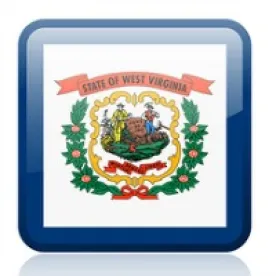In the midst of the current economic downturn, the West Virginia Department of Environmental Protection (“WVDEP”) had proposed significant changes to the agency’s water program rules. Note that changes adopted during the 2016 legislative session for the WQS rule are to become effective on July 8, 2016. more
On June 16, 2016, the WVDEP hosted its West Virginia Department of Environmental Protection Advisory Council quarterly meeting to review the WVDEP’s proposed rule package for the 2017 legislative session. The agenda for that meeting included proposed changes to the existing West Virginia water quality standards (“WQS”) rule as well as a proposed new rule titled “Determination of Compliance with the Biological Component of Narrative Water Quality Standards.” Notably, the new rule proposed to adopt certain benthic macro invertebrate measures, using the more stringent genus level, which is an important departure from historic biological assessment protocol for the state. The proposed new rule has apparently been withdrawn by the WVDEP for public or legislative input at this time, but is of concern in that it was proposed by the agency.
The state’s WQS rule is proceeding to public comment prior to legislative consideration. The WQS rule includes several important proposed revisions. The definition of Category A waters has been expanded under section 47-2-6.2 of the rule, such that “waters” that are “or are capable of being used” for human consumption after conventional treatment are defined as Category A waters. The proposed new provisions in section 6 of the rule mandate a presumption that all waters are Category A waters, and that anyone “seeking a determination of unsuitability” must comply with the use removal process set forth in 46 CSR 6. Further, any determination that a Category A use does not apply must be approved by the United States Environmental Protection Agency (“EPA”). The DEP describes this change in its notice filed with the Secretary of State as follows:
The language proposed presents an alternative application for the Category A drinking water use designation while continuing to protect potential public water supplies. The solution put forth in these sections offers an approach to determining the unsuitability of a water in the NPDES permitting process, based on either insufficient flow or hydrologic modification. This approach continues to use all of the requirements set forth in 46CSR6 for revising Water Quality Standards, which are based on the federal regulations for such action.
Application by the WVDEP of the Category A use has been the subject of intense debate over the years and many are likely to question the applicability of the existing procedural rule and any assumption of legislative intent or approval of the concept that all state waters are Category A waters unless one completes a use removal. Nevertheless, it appears from the agency’s filing to be its current interpretation.
WVDEP next proposes to revise the critical design flow for toxicants for which human health criteria have been adopted. For carcinogens, the critical design flow is proposed to be the long-term harmonic mean flow. For noncarinogens, the critical design flow effluent limits is proposed to be the minimum mean thirty consecutive day drought flow with a five-year return frequency, or 30Q5. The critical design flow for other criteria would remain as 7Q10 (minimum seven day low flow with a ten-year return frequency).
Methods for establishing a site specific criterion are proposed to be expanded in certain circumstances, including use of the Biotic Ligand Model for copper, or “other methods” with prior approval from the Secretary. Also, in section 9 of the WQS rule, in the context of establishing safe concentration values where a specific WQS have not been established, the methodology for bioassay testing has been updated to rely upon EPA’s 2012 procedures as outlined in 40 C.F.R. 136, or other methodologies as approved by the Secretary.
Numeric criteria are proposed to be added for E. coli – replacing fecal coliform as an indicator for the protection of human health, and organics Acrolein, Carbaryl, Diazinon, Nonylphenol, and Tributyltin.
It is not obvious from the WVDEP’s filing whether the agency has covered all of the new requirements of Senate Bill 619 (passed March 12, 2016), but compliance with that legislation which places emphasis upon whether the state administrative programs are more stringent than necessary than federal guidances or law is anticipated to be important for legislative rules.
The public hearing for the WQS rule is scheduled for August 9, 2016, from 6 – 8 p.m. at the WVDEP Headquarters building, in the Cooper’s Rock Training Room. Written comments are due by the end of the public hearing, at 8 p.m. A link to the proposed rule can be found here.




 />i
/>i

